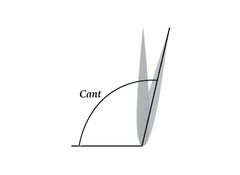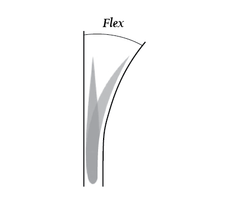A Beginner's Guide to Surfboard Fins
Did you know that fins are crucial in determining the performance of a surfboard in different types of waves?
To optimise your surfing experience, it's important to select the right fins based on the fin box, surfboard size, and your personal preferences. Take advantage of this easy-to-follow guide to improve your understanding on surfboard fins.
Fixed And Interchangeable Surfboard Fins
Fixed or glass on fins, are attached to the surfboard during the lamination process. The installation of these fins is the responsibility of the glasser, laminator, and they cannot be changed.
Surfboards that allow for interchangeable fins have boxes where fins are screwed in. To secure the fins in place, small inset grub screws are used, which can be removed or replaced using a fin key.
Surfboard Fin Box Systems
There are two main fins boxes systems that allow interchangeable fins; Twin Tabs and Single Tab. The type of interchangeable fin base that can be inserted into your surfboard's box is determined by the fin box system.
Surfboard Fin Sizes
The size of a fin can make a significant impact on your performance and your surfboard's behavior in the water. When deciding on a fin size, it's essential to consider your weight and surfing style. Opting for a larger fin will give you more stability and control in bigger surf, while a smaller fin will feel looser and be more forgiving. However, a small fin may lack drive and control in larger waves. For optimum performance in all conditions, a medium-sized fin is the highly recommended.
Surfboard Fin Set-ups
To enhance your surfing experience, it's important to understand your surfboard's fin set-up and how it can be adjusted to suit different surf conditions. Simply flip your board over and examine the tail. The number of fin boxes you see will determine the fin set-up, which generally ranges from one to five fins. By understanding your surfboard's fin set-up, you can customise your surfboard to meet the demands of any surf conditions you may come across.
The most common surfboard fins set-ups are Single fin, 2 +1 fins, Twin fins, Thruster fins, Quad fins and 5 fins.

Single fin boxes have a longer base, which allows you to move the fin forward for a looser feel or further back for better hold and control, especially during nose rides.
A helpful tip is to place the fin in the center of the box for your first few surfs to test out its sweet spot, then adjust accordingly to match your surfing style.

The 2+1 fins configuration consists of a single longboard fin box placed in the center and two side fin boxes on either side, which are known as side bites fins. This setup is commonly used in performance longboards, fun surfboards, and SUPs.

Twin fin or 'twinny' setups are a great way to add excitement to your surfing. While they may not be the best choice for big waves, these setups are ideal for fish shapes and fun boards. Twin fins provide a unique skating sensation and allow for longer, more fluid turns.



With a 5-fin set-up, you can mix and match fins based on your preference and surf conditions. Whether you prefer the freedom of a twin fin, the traction of a thruster, or the speed of a quad, you can easily switch it up without needing multiple surfboards.
Getting Technical

When measuring a fin's height (or depth), it is taken from the bottom of the fin to its highest point. A deeper fin will provide more stability, while a shorter depth will result in less stability and a looser feel. If you want quicker turns, shorter fins may be the way to go.

The base length of a surfboard fin refers to its widest point, which is in contact with the board. Longer bases permit more water flow, resulting in faster board movement. On the other hand, shorter bases facilitate sharper turns.





The shape of the side of fin, or the foil, plays a critical role in determining how surfboards performs in the water. It creates lift underneath the surfboard and impacts how water flow past the fin.
Below are the main types of foils and their details.
Flat foil: Usually found on side fins, they have a curved outer edge and a flat inside. These foils provide a consistent, reliable feel in various conditions, offering drive, pivot, and hold.
Inside foil: These foils have a curved outside and a concave inside. They generate more lift in slower, less powerful waves. However, they may produce more drag in faster waves, so they're not recommended for those conditions.
50/50 (symmetrical) foil: A symmetrical foil used on all center fins where both sides are convex. Even water flow on both sides creating stability and control.
80/20 foil: Combines the performance of a center and side fin offering increased speed, smooth rail-to-rail transitions and a consistent feel in a variety of conditions. Normally used as trailers for Quad fins set-up.
Helpful Tips:
-
Surfboards with flexible fins with a little rake will be fun and loose to ride.
-
Surfboards with larger fins and more rake will be stiff, faster and have better drive.
-
Surfboards with more rocker may work better with a larger fins set-up.
-
Surfboards with wider tails will go better with a larger fins set-up.
-
Surfboards with a smaller and stiffer fin set-up will be more responsive.
-
Shorter surfboards in bigger waves will requires a larger, more raked fin.
-
Generally, larger surfers will require larger fins, while smaller surfers will benefit from smaller fins.
-
The placement of your single fin in relation to the tail can significantly impact your surfing experience. For a looser feel, set the fin forward in the box. For more hold and control, set it further back.
In conclusion:
Just like choosing the perfect surfboard, selecting the right fins for your surfboard offers an almost endless amount of experimentation and potential.
Moreover, when you factor in the various shapes, foils, and designs available, the possibilities for the future of surfboard fins are truly exciting. So, don't hesitate to switch up your usual fins for something unconventional.
Who knows? You might find a combination that could change your surfing forever.
In addition, we're here to offer any additional information you need to make an informed decision.
